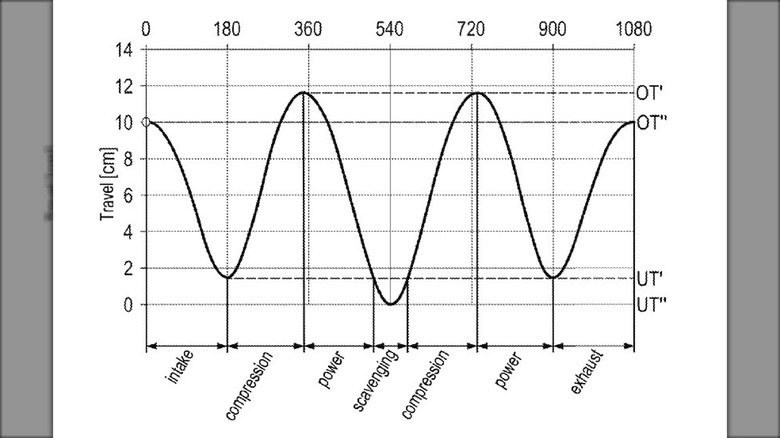Porsche's 6-Stroke Engine: All The Game-Changing Details From The Patent
When I went to school for engine repair in the 1980s, we studied the differences between two- and four-stroke engine cycles extensively. If you're not familiar with engine strokes, understanding the basic concepts is simple. A four-stroke internal combustion engine operates on the Otto cycle, a design conceived by German-born Nicolaus August Otto as early as 1861 and eventually awarded patent number 365701. The four strokes of the Otto-cycle engine include intake, compression, ignition (or power), and exhaust and take two revolutions of the crankshaft to complete.
Porsche, interestingly another German entity, applied for a patent on its six-stroke engine design, entitled "Method for a Combustion Machine with Two Times Three Strokes," on February 23, 2024, with the United States Patent and Trademark Office. Like other variations on the Otto-cycle engine that have surfaced over the years, including the rotary engine used primarily by Mazda and the Scuderi split-cycle engine, the Porsche six-cycle is a uniquely orchestrated, albeit confusing, series of events.
The simplified version is that the new engine design, awarded patent number 12123342 on October 22, 2024, utilizes six strokes to complete its cycle. Those two strokes, an additional compression and power stroke, require an extra crankshaft rotation and, along with a potential extra injection of fuel, are used to scavenge any useful leftover fuel from the initial power stroke. The six strokes in order include: intake, compression, power, compression, power, and exhaust.
What makes the Porsche six-stroke engine special?
In addition to the extra two strokes, the Porsche six-stroke engine is special because it utilizes an eccentric connection between the crankshaft and a geared planet wheel that rotates within an annulus ring gear. The eccentricity causes the piston stroke to have two different top dead center (TDC) and bottom dead center (BDC) values.
The shortest strokes of the six strokes coincide with the intake and exhaust strokes, while the longest strokes occur in the middle of the cycle as illustrated in the image above. The longer of the two power strokes, extending to the lowest BDC, exposes scavenging ports designed to accommodate a discharge of gases from the combustion chamber, somewhat reminiscent of two-stroke engine operation. Finally, the two strokes that extend to the tallest TDC compress the fuel mixtures prior to ignition.
The advantage of the six-stroke engine compared to the four-stroke is its ability to include two power strokes in three crankshaft revolutions. The four-stroke design requires four crankshaft revolutions to create two power strokes. In broader terms, at 3,000 rpm, the Porsche six-stroke engine delivers 2,000 power strokes whereas a typical four-stroke will only produce 1,500 power strokes.

